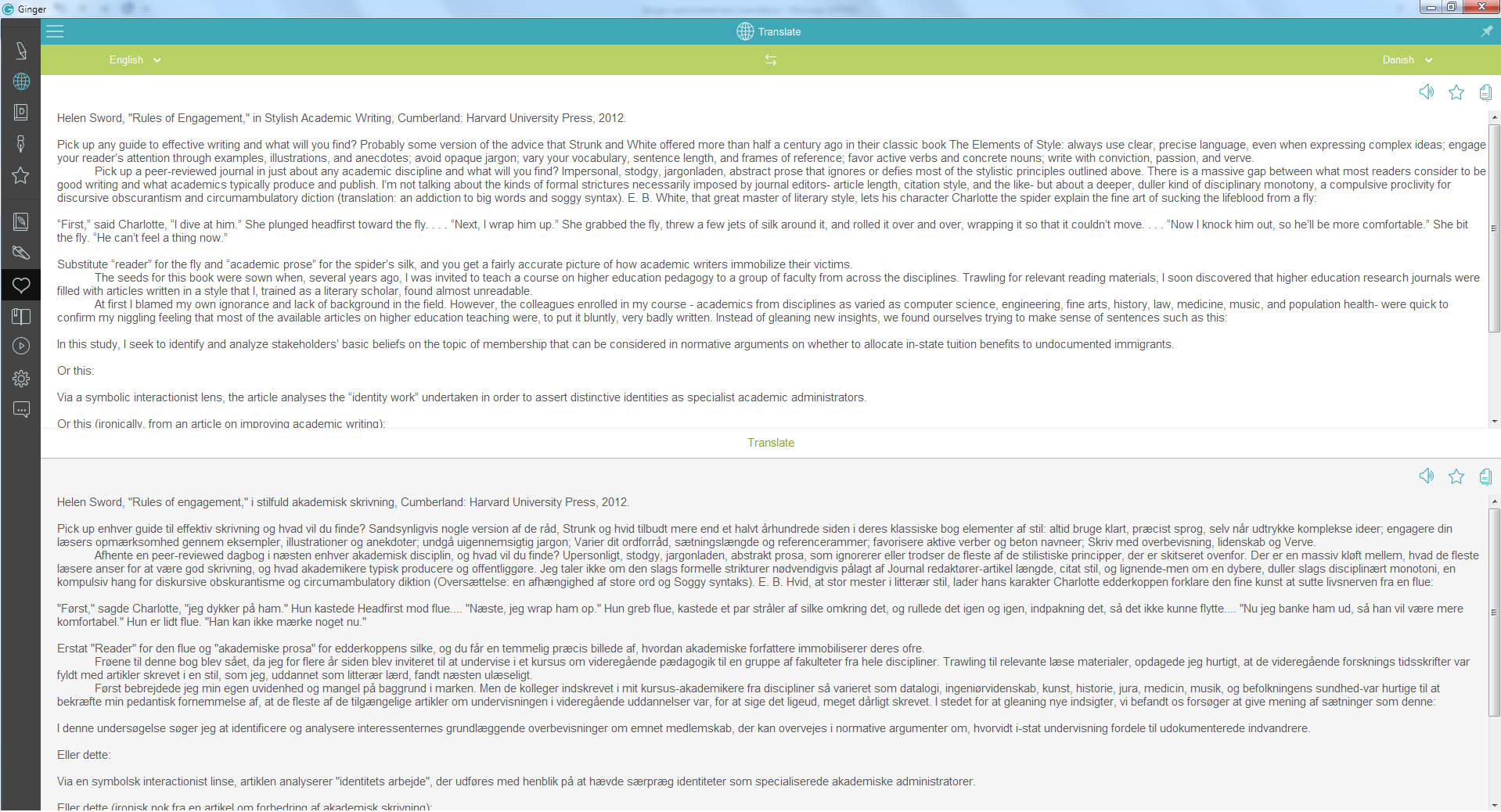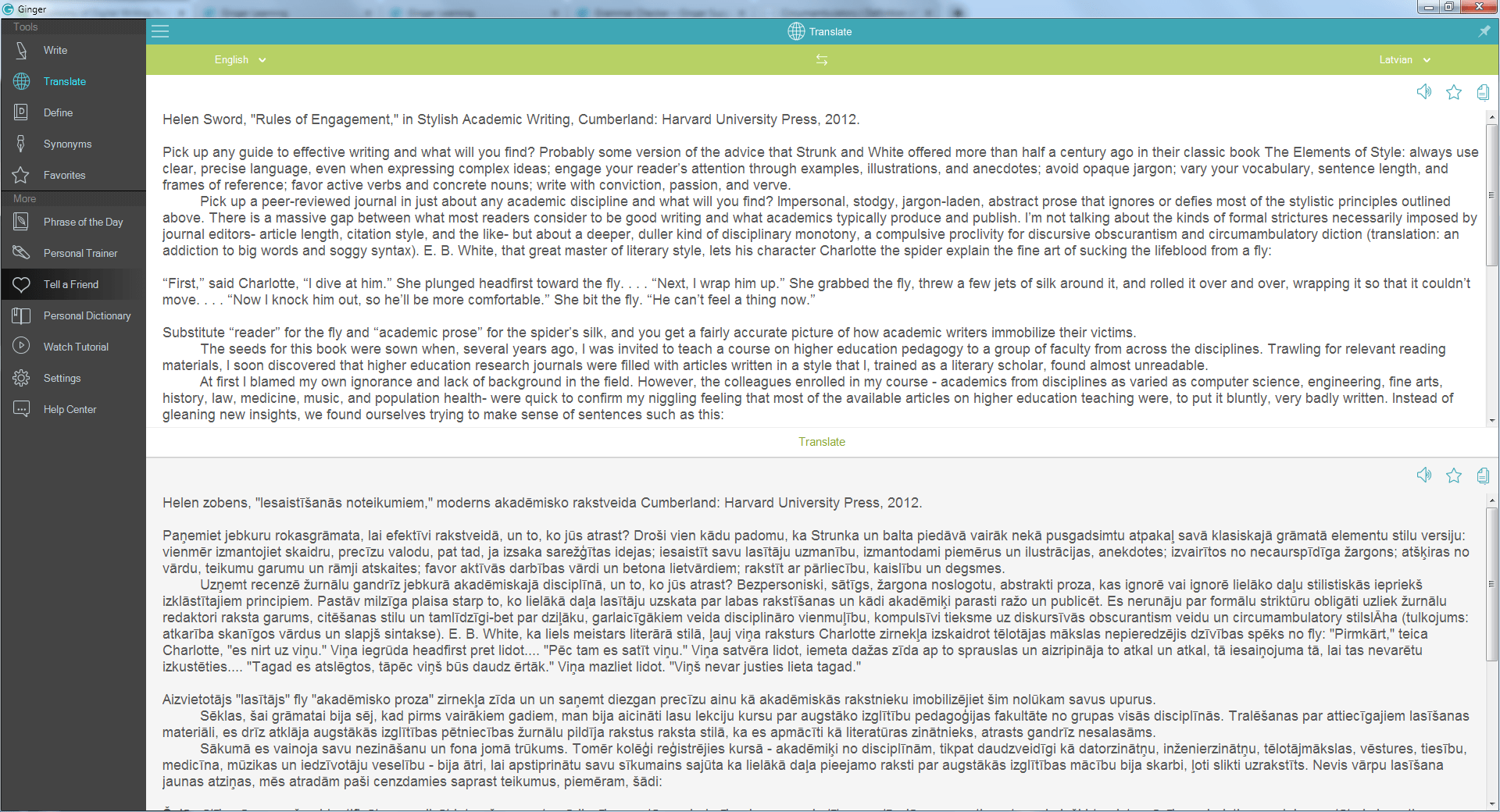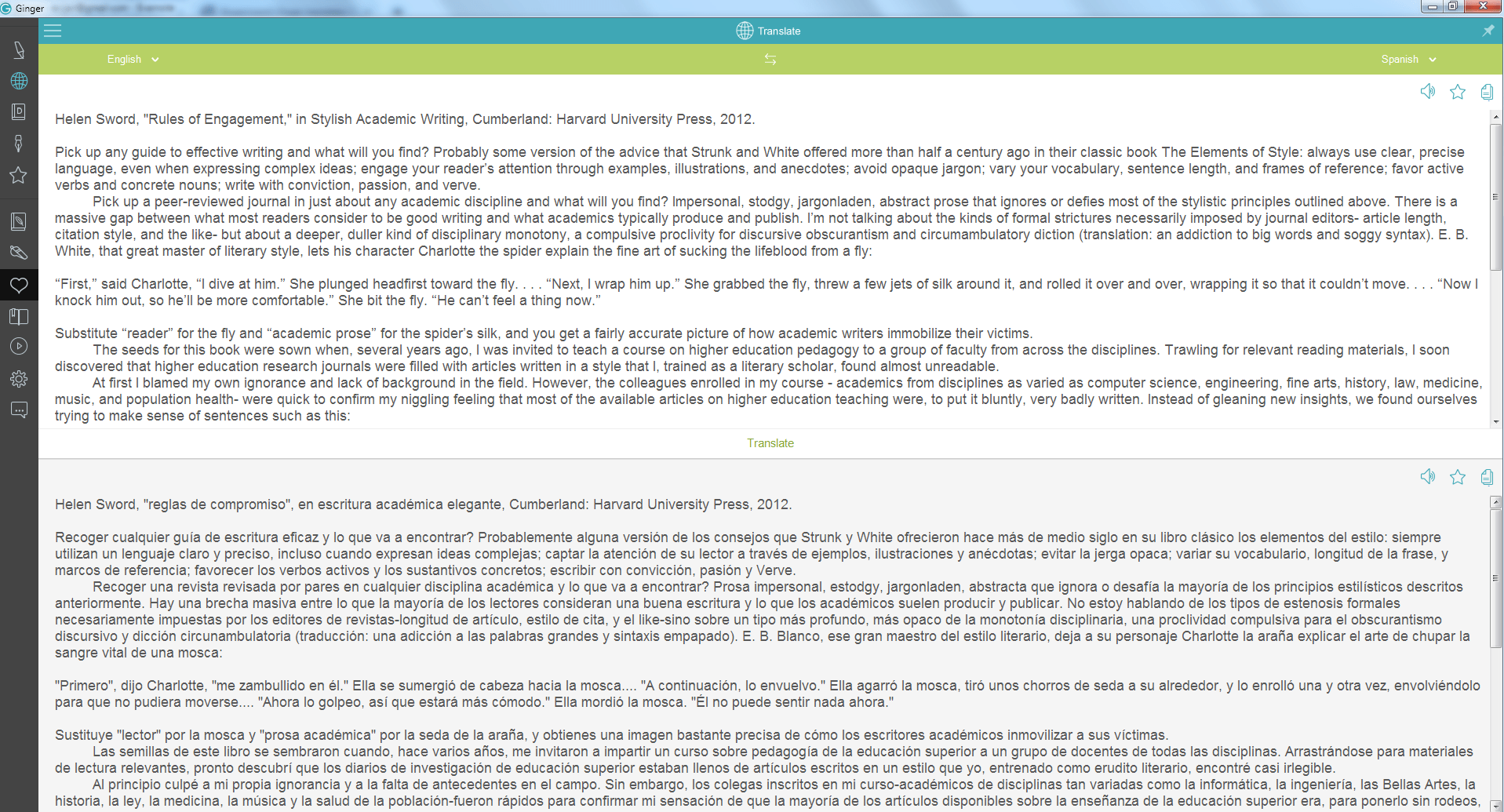Ginger translates Helen Sword’s Stylish Academic Writing
We asked Ginger to translate the same excerpt by Helen Sword from English into a number of other languages (with the help of the Microsoft® Translator that’s integrated into Ginger’s system).
Predictably, the result was simultaneously sad, surreal, entertaining, and disturbing.
Here is Ginger’s translation into Danish (click to enlarge the image):

To a native Danish-speaker it might be obvious that no human thinking was involved in the translation and phrasing of the text. Besides the awkwardness of the wording in the Danish translation, there are also straight-up mistakes such as the re-use of non-translated English words (“Pick up”, “jargonladen”, “interactionist”, etc.).
In another instance in the Danish version, the automated translator has improperly chosen the Danish word “sutter” for the translation of “sucking” (“sutter” has sexual connotations).
The opening line “… and what will you find?” has been translated into Danish as “… og hvad vil du finde?”, which is really not how one would re-phrase the original English expression in a proper Danish translation. In Danish, one would have to rearrange the words and reconstruct the sentence into something along the lines of ”Uanset hvilken vejledning til effektiv skrivning, du hiver/tager frem, vil du formentlig opdage det samme. En eller anden version af de råd/anbefalinger som Strunk og White fremsatte/tilbød…”. One would not phrase the opening sentence as a question in Danish.
There are many other examples of similar mistakes in the automated translation. Overall, even though the translation might give the reader a sense of what the original text is about (e.g., its topic, message, etc.), it does not read like something composed by a human being.
Here is its translation into Latvian (click to enlarge):
The translated version is littered with mistakes that break the basic grammar rules of the target language, resulting in a text that is close to gibberish. Parts of speech, or their relationship within a sentence, are not correctly recognized in the source language and are therefore incorrectly translated (the noun “writing” in English becomes the adjective “rakstveida” in Latvian, etc.). Adjectives and verbs do not agree in case, number and gender with the nouns they modify. At best, this is a literal word-for-word translation that shows no understanding of the contextual meaning in English.
Ginger’s translation into Spanish is not much better, presenting a text that is in a broken target language:
Overall, the Spanish translation is not completely unrecognizable. But like the other translations, it is obvious no human was involved. This is a word-by-word literal translation with no awareness of verb tenses and modes, or proper nouns.
For example, while the context of the sentence in English allows us to understand that “pick up” (in the very first sentence) is being used as a personal verb targeting the reader, the Spanish translation is the impersonal, infinitive “recoger.” If this was translated by a human, they would have taken in the whole context of the sentence and realized that the original English sentence is a question that engages the audience, and that the correct Spanish translation would be the verb in its personal imperative form: “Recoja cualquier guia, y ¿qué va a encontrar?” This problem happens with multiple other verbs in the translation.
Regarding nouns, the system is unable to recognize book and article titles and last names as words that should not be translated to Spanish because they are proper nouns. That is why E.B. White’s name, which so happens to also be the name of a colour in English, is being wrongly translated to “E.B. Blanco“.
Lastly, there are some minor problems with the system’s inability to choose the correct translation based on the context, which is another by-product of the word-by-word literal translation. When translating the title “Rules of Engagement,” for example, the Ginger translator produces “reglas de compromiso” (rules of commitment) rather than the more accurate translation of “Reglas para cautivar/interesar.” Similarly, the system translates “knock him out” to “golpeo” (I hit him), rather than using “lo dejo inconsciente.”
Perhaps we have simply been unlucky in our selection of the above target languages. Tell us about your own findings from translations into other languages! If you have a nice sample to share, let us know, and we can add it to the collection.
Text used in the experiment: Sword, Helen. (2012). “Rules of Engagement,” in Stylish Academic Writing. Cumberland: Harvard University Press.

